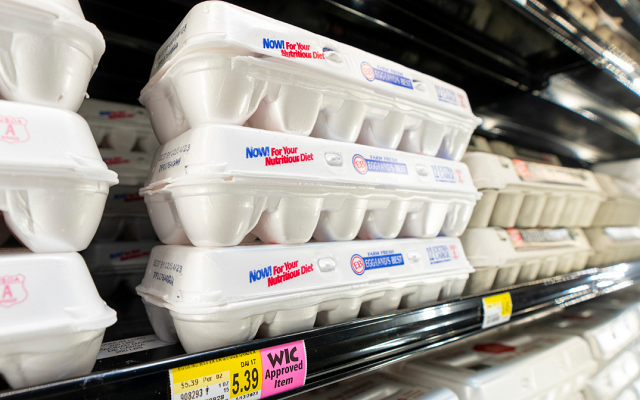Texas egg prices plummet as supplies outpace demand

SAN ANTONIO (KTSA News) — Just a few months ago, egg prices had reached heights that gave birth to the phrase, ‘eggflation.’
But that was then, and this is now.
Egg supplies are still below where production was a year ago, but now supplies are rising amid declining purchases, according to David Anderson, Ph.D., AgriLife Extension economist, Bryan-College Station. This means that egg prices are falling, and that trend is expected to continue.
“Some of the demand issue is seasonal, but consumer response to higher egg prices is also part of it,” said Anderson. “Meanwhile egg producers continue to increase production, and the market is responding to the supply and demand factors. It’s a good example of how the market works.”
Producers continue to rebuild the table egg-laying flock that was hit hard by the avian flu outbreak beginning in February 2022. While egg production has increased, Anderson said demand typically dips after Easter before climbing again around Thanksgiving Day and through the fall holiday season.
The U.S. Department of Agriculture – Agriculture Marketing Service reported retail eggs nationally were $2.74 per dozen between April 14-20 and were expected to be around $1.08 per dozen this week.
Egg prices peaked at $4.82 in January, according to the Consumer Price Index.
Anderson expects the cost of a dozen eggs will continue to decline in other markets around Texas and the U.S. because wholesale prices are already down to 84 cents per dozen. Prices that low could be concerning for producers and are likely to trigger thoughts about slowing production growth. Declining costs for feed like soybean meal and corn are also helping livestock and poultry producers and may contribute to even lower prices.
Anderson noted that wholesale egg prices peaked at over $5 per dozen when eggs were hitting historic highs. On the other hand, retail prices did not reach $5. He suspects contracted prices may have held back wholesale costs grocers paid or that grocery stores strategized losses on eggs to keep customers.
“Consumers don’t react well when prices are so volatile, so some stores may have taken losses on eggs to keep people in their stores,” he said. “The falling wholesale egg prices could be a good indicator that the next Consumer Price Index might show falling retail prices.”
The contributing factors – increased production and supplies coupled with lower demand – are already pushing retail egg prices below $1 per dozen in about 1% of grocery stores surveyed in the South-Central U.S.
You Might Also Like



